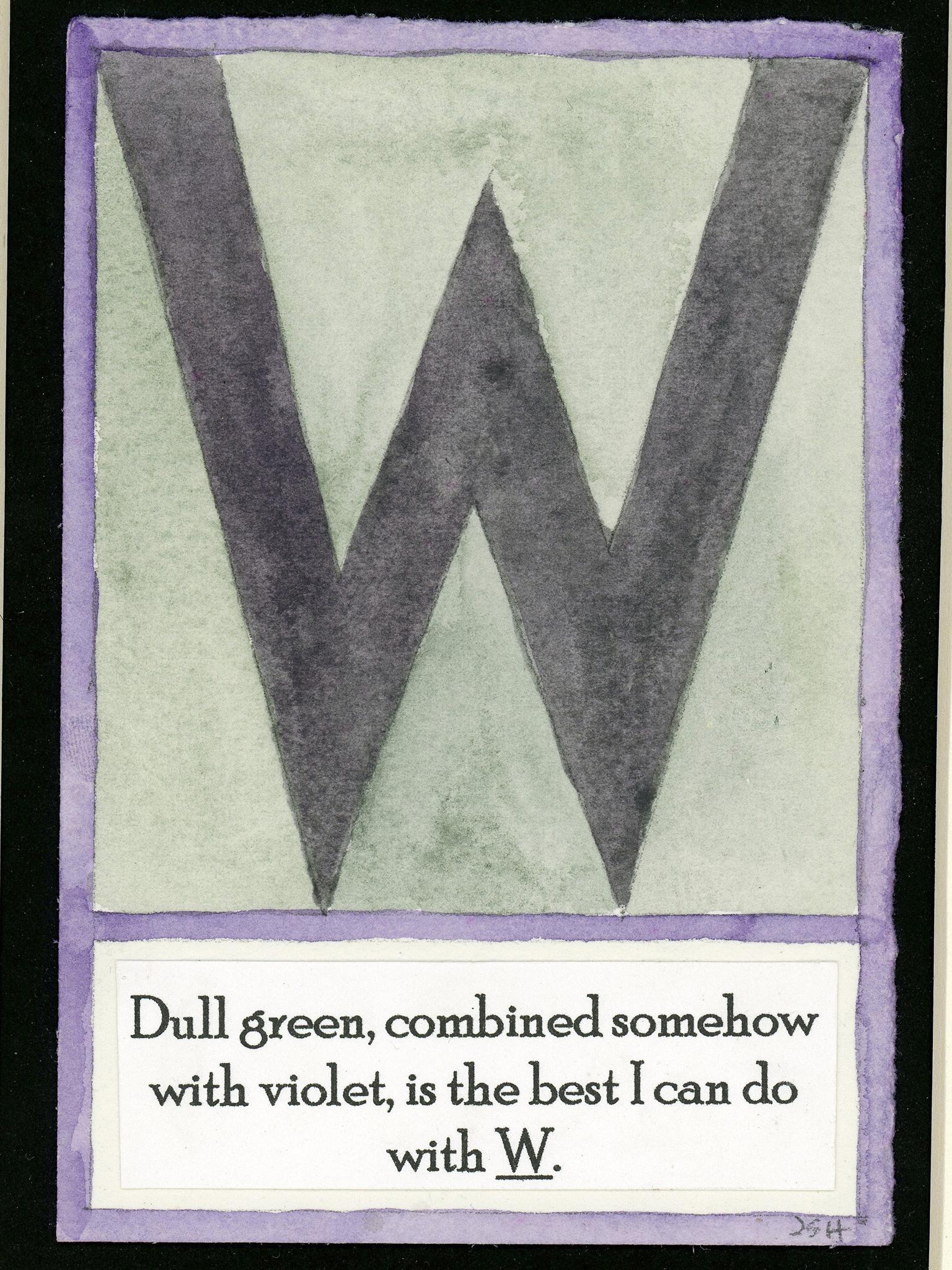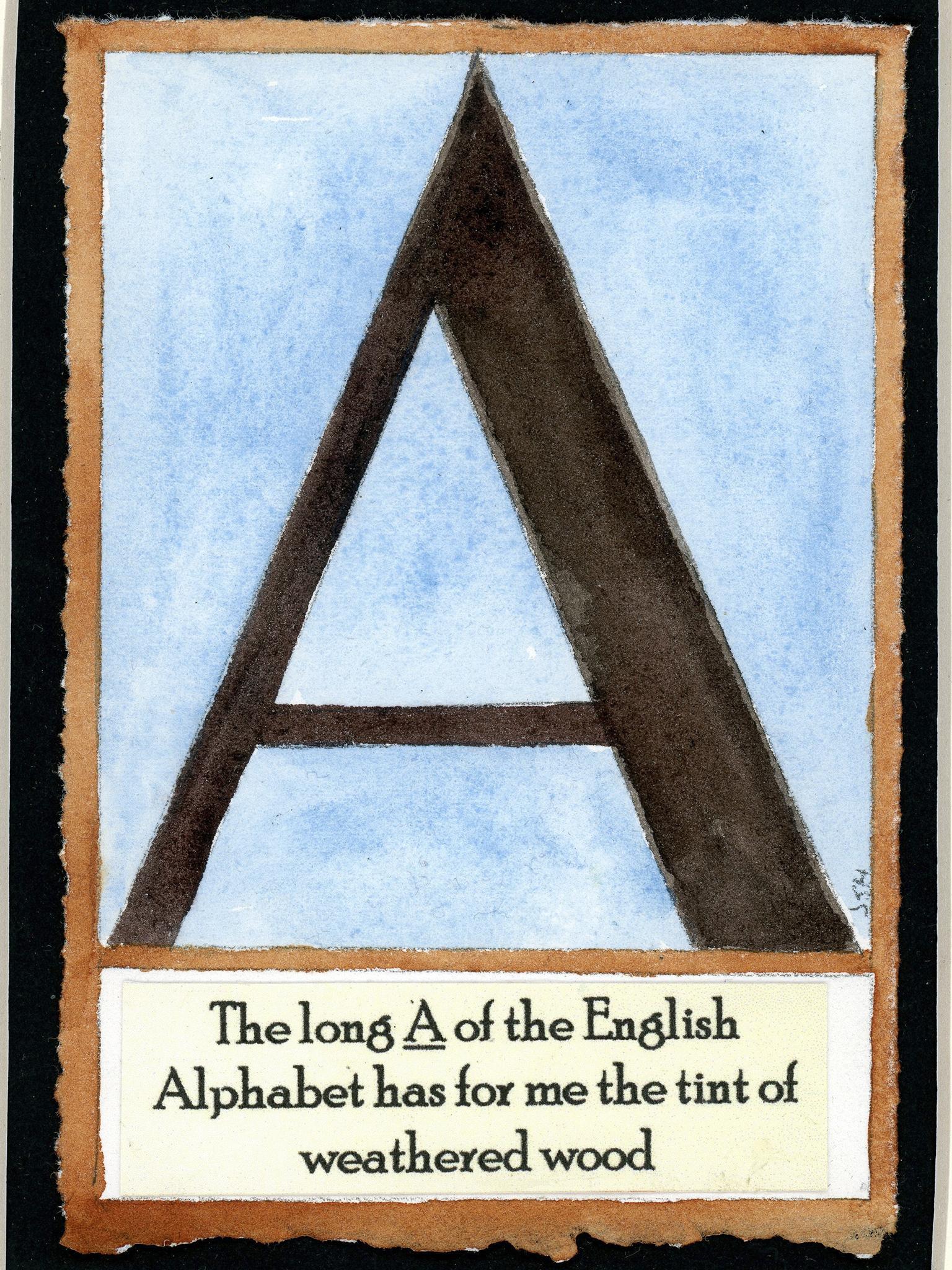What it’s like to live with synaesthesia
Holly Baxter was at university when she realised that the way she processed information – namely, by seeing words as colours – was unusual. Here she speaks to fellow synaesthetes and learns more about how the complex condition affects the brain in different ways for different people

Saturdays are yellow, and Thursdays are dark blue: that’s something I’ve always known. To me, it’s as obvious as saying that winter is cold and summer is warm. It was so completely obvious to me that, for most of my life, I didn’t think it was worth saying out loud. Just like I didn’t think it was unusual to think that the names Audrey and Kirsty had the texture of folded curtains, the word “fortitude” had a texture like iron, and the word “enlightenment” was magenta with a texture like bubbles. It’s not that I assumed everyone else thought Thursdays were specifically blue; I just assumed everyone processed information that way.
It was at university when I started to realise not everyone had a colour for Wednesday or a visual idea of a song. On the back of a toilet cubicle outside my department in my second year, I came across a poster asking: “What colour is Monday? If you can answer that question, you might have synaesthesia. Please participate in a PhD student’s neurological study!” I stared at the poster for a long time and then sent a text message to one of my friends: “What colour is Monday?” “I have no idea what you’re talking about,” she replied.
1 per cent of people have synaesthesia, according to Harvard Medical School – but we all have an intuitive sense of how it works. One famous experiment that claims to prove this involves showing people a picture of a rounded shape next to an angular one, and asking: “Which shape is called Kiki and which one is called Bouba?” Almost everyone who’s faced with the question answers that the rounded shape is called Bouba while the pointed one is called Kiki. Conventional wisdom tells us the question should be indecipherable nonsense, but German-American scientist Wolfgang Kohler demonstrated that the answer was uniform across all the different cultures and languages he conducted his experiment in. What’s now known as “the bouba/kiki effect” seems to show that our brains are all capable of these associations, and all carry out processing on this level, even if some utilise it more than others.

So how do you end up with synaesthesia? It’s unclear – it seems like it could have a genetic component, but not a strong one. When I asked around my family for this feature (opening each conversation with the same question I saw on that poster: “What colour is Monday?”), my mum responded that she’d always associated colours with words, and thought it was normal. My dad, however, and my three siblings replied that they understood the concept but they didn’t experience it themselves. Outside my family, some friends told me the idea was so alien to them that they struggled to even believe it exists.
But clearly it does exist. When I asked Twitter and Facebook followers if there were any fellow synaesthetes out there, they were more than happy to tell me their stories. “I remember the new school year had started at age nine or so and, during RS, my classmates and I were being issued our timetables for the subject,” Ella Jones told me. “I remember turning to a friend and exclaiming that it made total sense for Religious Studies to take place on a Tuesday – what with the ‘R’ of RS being orange, and Tuesday being orange also. I remember the blank stare that was thrown in my direction, which I didn’t understand, so I just dismissed it.
“I also seem to attach certain emotions to particular colours and numbers – why anyone would like the ‘red’ four, I have no idea. And as for purple July, yuck… I also feel contentment when everything aligns perfectly – for example, when one of my best friends from university Sarah lived in a dorm which was numbered ‘333’, I felt a strange sense of satisfaction because 3 is yellow, as is ‘S’, and she is blonde. I realise this sounds crazy… but it’s just the way it is.”
George Sully had similar experiences: “I first suspected something was up when talking with my mum at an early age – probably around six or seven years old – and explaining that, since green was my favourite colour, it would naturally follow that seven was my favourite number. ‘Because seven is obviously green,’ I remember saying… Mum was pretty confused but let it slide. I was offhand about it because, to me, it was as blatant as saying that seven was also made of two lines that met at an acute angle. Otherwise it wouldn’t be a seven. So why wouldn’t it be green? It just is!
“I was an early teen, maybe 13, when I eventually Googled ‘seeing numbers as colours’ and found the word ‘synaesthesia’… I have always been a creative person, and I particularly enjoy writing. To me, prose is a multi-coloured textual thing; alliteration and assonance leap out to me as stabs of the same colour. When I write I’m drawn to particular colours. With numbers, I’m fairly good at remembering strings like phone numbers or my debit card number. However, I run into issues if the ‘real life’ number on something, like a parking space or a floor number, has its own colour that’s in conflict with the colour in my head.”
Meanwhile, Mark Constantine, co-founder and managing director of Lush, described having "always smelt in shapes". "I think it enables me to to smell order where other people can't smell order – for instance, how the shops look," he explained, clarifying that he sees the condition as "a superpower rather than a disability".
One explanation for the condition is that brain regions next to each other have accidentally grown too many neural connections between each other. This could explain why grapheme-colour synaesthesia – the association between colours and words, like knowing that Thursdays are blue – is the most common form. The areas in the brain responsible for making sense of language and processing colours are right next to each other, and fMRI scans show activity in both regions when synaesthetes hear words. The “neurological pruning” we all undergo in the womb, which cuts off some neural connections deemed unnecessary, might not have happened so aggressively in people with synaesthesia.
The other popular theory for synaesthesia goes by the catchy name of “disinhibited feedback”. Our brains are always making decisions about how to filter information, otherwise we’d be so overstimulated by what was happening around us – phone calls, chatting colleagues, the distant sound of a fridge humming, a dog barking outside, the emails refreshing in your inbox – that we’d never be able to get anything done. Neural decisions are made every second about which type of input is important – a sudden scream, or the voice of the person you’re currently speaking to – and which can be selectively ignored or relegated to the background – the whirr of a computer, for instance, or the sound of a TV down the hallway. There’s also a lot of inner activity which could potentially distract us from the world: meet a man called John, for instance, and somewhere your memories about an ex-boyfriend or an uncle called John are being accessed, alongside a colour associated with John, a feeling, a texture, maybe even a taste. Different areas of your brain process meeting John on different levels – but, in order to keep you functioning normally, you shut most of those associations down without attending to them; in other words, you inhibit your feedback. Synaesthesia is a small example of what happens when one of those branches isn’t lopped off by the woodsman of your mind. It’s disinhibited feedback: a taste of some of that background processing you don’t get to consciously experience.

For most people, it’s a help rather than a hindrance. I remember spellings of words after only seeing them once because they immediately have powerful colour combinations I can’t forget. There must be an internal logic to my synaesthesia, because I’ve noticed that words with Ts and Us in are often blue, as are words with Cs and As, whereas an S at the beginning can turn a whole word yellow and words with Hs and Us in are usually maroon or brown. Similarly, I can remember long strings of unconnected numbers fairly easily because of their colours – even though my maths skills leave something to be desired. “I can pitch a song just right because the colours would be off otherwise,” Lorna Prichard, another fellow synaesthete, told me. “I also see dates, numbers and time in 3D as though placed in space. I rarely use a diary because it’s so effective.” Neurological studies show it’s common for synaesthetes to have better memories than the general population.
Synaesthesia comes in many forms: there’s a subset, for instance, that usually belongs to extremely gifted mathematicians and helps them to do seemingly impossibly large calculations at lightning speed. These people perceive numbers as shapes; the number 23, for instance, might appear as a triangle, and the number 478 might appear as a hexagon on top of a square, but when asked to calculate 23 x 478, the person in question can see the shapes come together and morph into another intricate combination of 3D shapes entirely, which they quickly interpret as 10994, the answer to the sum. Then there are other, equally fascinating subsets of the condition, such as lexical-gustatory synaesthesia, where words have tastes, or ordinal-linguistic synaesthesia, where letters have personalities. Often synaesthetes have a mixture of a few, as I do. Meanwhile, awareness of the condition is slowly becoming more mainstream: Wellcome Collection currently features synaesthesia as part of its States of Mind exhibition in its Euston-based galleries, strikingly illustrated by a watercolour alphabet by Jean Holabird, based on how Vladimir Nabokov reported seeing letters (see images throughout this article).
The good news for synaesthetes (whether they’ve known it for years or they just discovered it while reading this article) is that the neurological quirk is positively correlated with creativity. And the good news for envious non-synaesthetes – or, perhaps, pre-synaesthetes – is that it seems you can trick your brain into developing the skill by forcing the association (always picturing words beginning with T as red, for instance). Meanwhile, the stranger 1 per cent of us will continue to avoid numbers with bad personalities and notice alliteration by the way it jumps off the page in a vivid hue. It might sound mad to 99 per cent of the population, but for people like me who know the number five is a snide orange tattletale while four is aquamarine and takes life as it comes, it’s a very welcome kind of madness.
Join our commenting forum
Join thought-provoking conversations, follow other Independent readers and see their replies
Comments
Bookmark popover
Removed from bookmarks